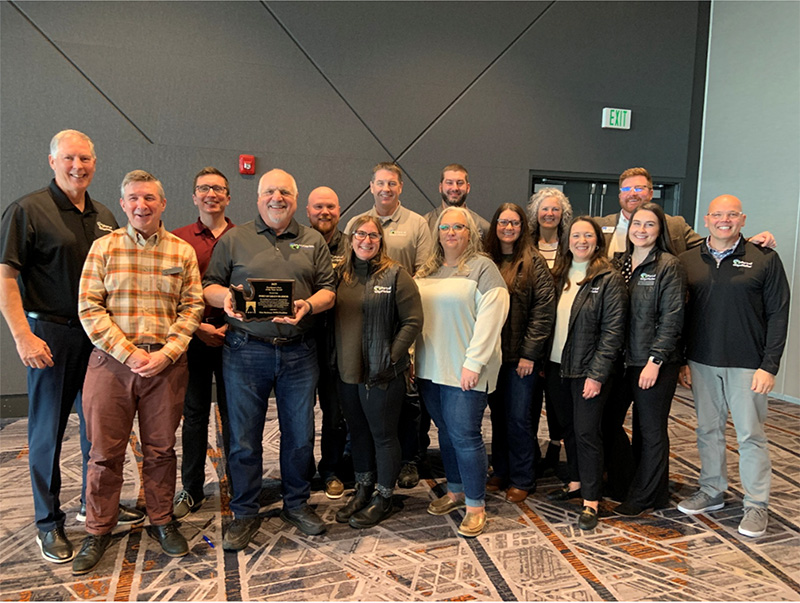By Frank Chmelik and Tim Schermetzler of CSD Attorneys at Law P.S.
On June 24, 2024, the Department of Justice (“DOJ”) issued a final rule on how special purpose district governments, including Washington ports, must make their website content and mobile apps readily accessible and usable by individuals with disabilities. This month’s column provides an overview of these new rules along with recommendations on how to prepare for their implementation.
These revised rules implement a long-standing mandate in Title II of the Americans with Disabilities Act (“ADA”), which requires state and local governments to provide individuals with disabilities effective communication, reasonable modifications, and an equal opportunity to participate in, or benefit from, government services, programs, and activities. Accessibility for websites, apps, and similar online services can often be overlooked, but just like a wheelchair ramp to access the port’s offices, these online forums may require modifications to ensure fair access to the public. Moreover, regardless of any rule update, it is a good practice for ports to increase access to web-based content to members of the public with disabilities given these tools have the potential to increase participation. This is especially true in light of the recent proliferation of remote attendance in commission meetings, online public notices, and online submission of public comments, to name a few.
Overview of ADA Web Content Accessibility Rules.
The Who: These new rules apply to special district governments, which are defined in the ADA to include a “public entity other than a county, municipality, township, or independent school district, authorized by state law to provide one function or a limited number of designated functions…as a separate government…” This includes Washington public port districts.
The What: The rules impose accessibility standards to web content that port districts provide or make available to the public through their websites or mobile apps. In order to comply with the ADA requirements, the rule requires web content or mobile apps comply with Web Content Accessibility Guidelines (WCAG) 2.1, Level AA. This is an internationally recognized accessibility standard that defines how to make web content more accessible to people with a wide range of disabilities, including visual, auditory, physical, speech, cognitive, language, learning, and neurological disabilities. Certain categories of web content will not need to meet these new standards, including, for example, archived web content, preexisting conventional electronic documents, content posted by certain third parties, password-protected or secured electronic documents, and preexisting social media posts. Note, however, that materials that are otherwise exempt may need to be provided in accessible form if requested by a person with disabilities.
The When: Ports must comply with the new rules by April 26, 2027. While this is more than two years away, ports would be wise to start the planning process for these rules well in advance.
The How: In addition to port staff, ports may be able to work with their existing website designers or retain a consultant to assist with making updates to their web content to comply with these rules.
If ports fail to comply with these new rules by the deadline, it could subject the port to DOJ enforcement actions under the ADA or a private action against the Port by a person with disabilities.
What can Ports do to Prepare?
Port districts will be more likely to succeed under these new accessibility standards if they create standard policies on web and mobile app accessibility. Some steps to consider include:
· Implement a policy that provides port staff with guidelines as to how to create web content that complies with the new rule.
· Explain to port staff how to provide accessible content to a requester with disabilities when that content is otherwise exempt from this new rule.
· Create an accessible process for people with disabilities to make accessibility requests and report accessibility problems. For example, a policy might say that if a blind person asks for an accessible version of a nonconforming PDF that otherwise falls within the archived web content exception, port staff must provide the person an accessible version.
· Identify a designated accessibility czar who will coordinate efforts, work with other port staff members, and answer questions regarding accessibility requirements.
· Test websites and mobile apps to ensure compliance. Work with people with disabilities to further test the content.
· As part of the implementation process, port staff should receive training about how to ensure that content is accessible. Such trainings should include staff who post content on websites or mobile apps, but may also include web developers, social media content managers, or procurement staff members who must make sure to buy or contract with companies that can create web content and/or mobile apps that meet the requirements of WCAG 2.1, Level AA.
As always, please contact your port counsel with any questions regarding this topic. And, if you have a particular question for a Knowing the Waters, please email us at fchmelik@csdlaw.com or tschermetzler@csdlaw.com





